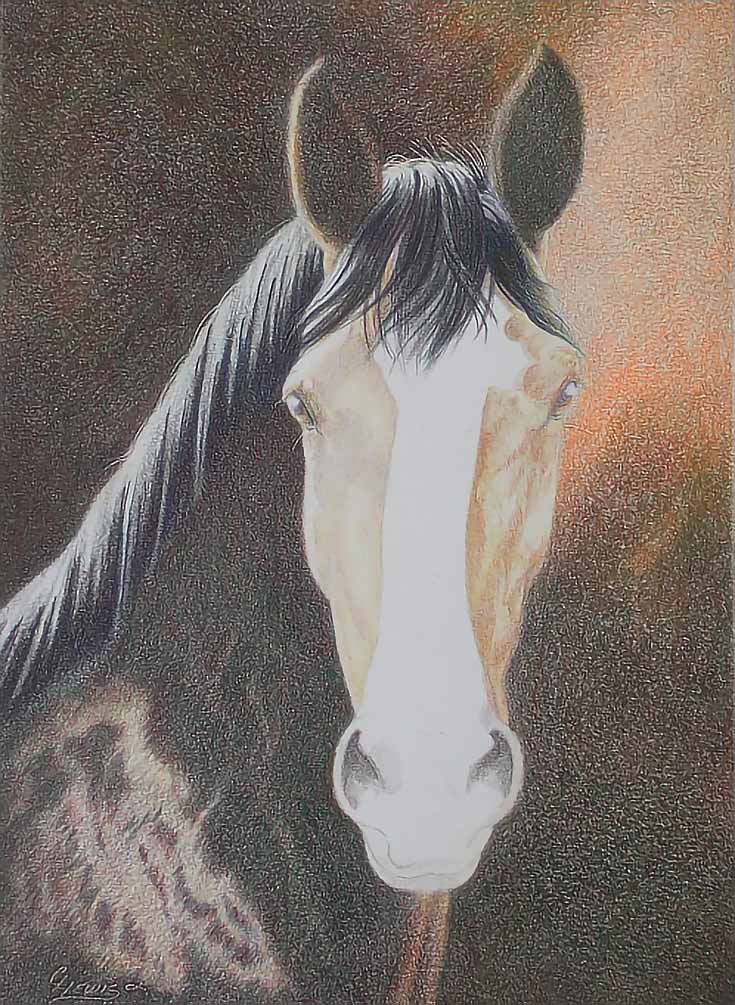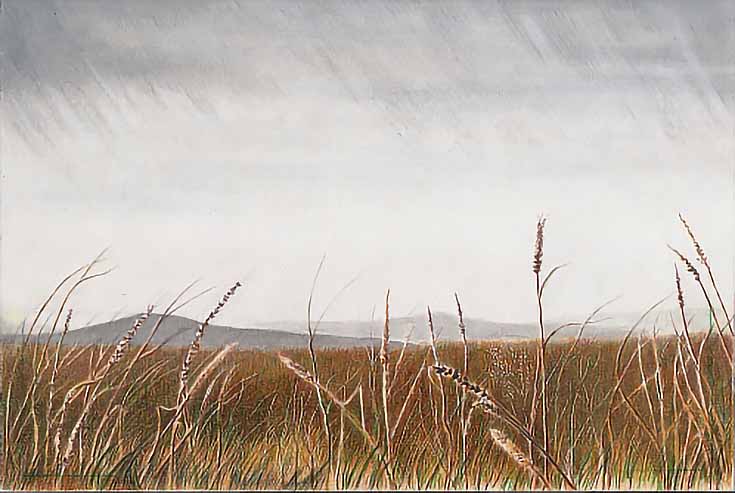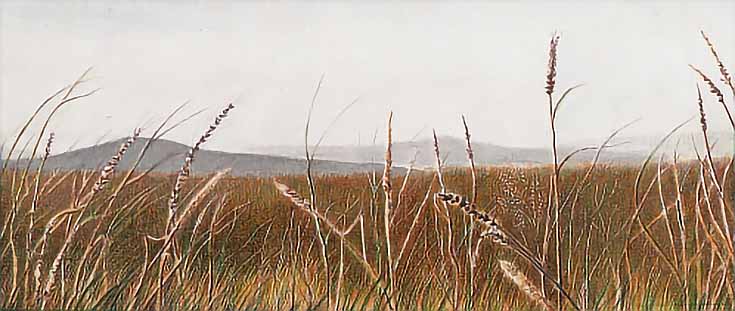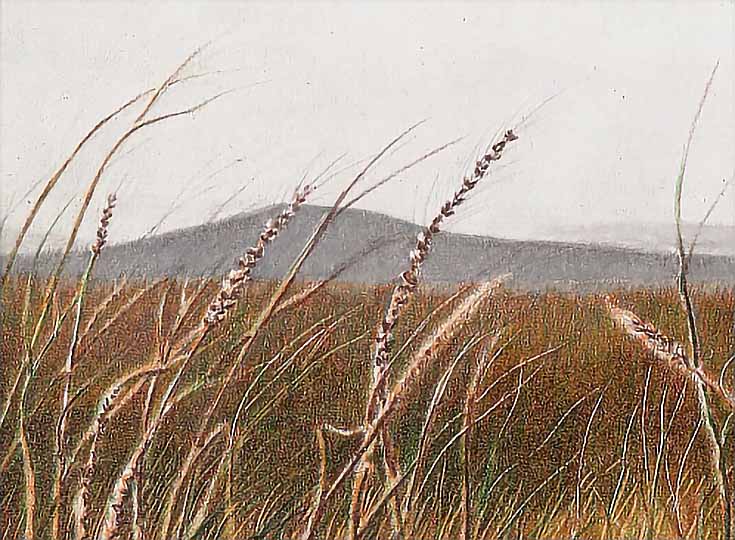Last week, I explained how to repurpose a sketch you don’t like by turning it into a different type of drawing. But what if you have a finished artwork you don’t like? What do you do with it; throw it away? Hide it in the closet where no one will ever see it?
Is there a way to rejuvenate such a drawing or to freshen it up and give it new zing?
The short answer is yes. There are a number of ways to repackage finished artwork, and today I’m going to share three of my favorite (and easiest) methods. In no particular order, here they are:
1. Frame it
Sometimes the easiest way to improve the appeal and marketability of a finished artwork is by changing the way it’s framed.
In the late 1990s, I drew a vignette-style portrait of a pony that I just loved. I thought it would sell immediately because the pony was so adorable and because so many horse people had ponies just like that when they were growing up. The paper was ivory or light tan, so I chose two shades of warm brown for the double mats, then framed it in a chocolate brown metal sectional frame.
Then I put it into my exhibit inventory. . .
. . . where it remained for many years.
Later, when I was framing a group of new drawings and paintings, I had that one reframed, as well. Upon the suggestions of my framer, we replaced the brown mats with a white inner mat and a blue outer mat that matched blue accents in the drawing.
The outside mat was cut wider and a Remarque (a small drawing on the mat) was added, as was a brass plate with the name of the drawing. The drawing was framed with a wood frame instead of metal. The overall package was larger, and the difference was night and day.
The drawing still didn’t sell right away, but it did eventually go to a new home. Sometimes, the only thing wrong with a drawing is the mat and frame around it. Before doing anything more drastic, try a different frame or mat or both. You might be surprised.
2. Section it
This partially finished drawing (below) was a 16×20 colored pencil study of an oil portrait. I wasn’t satisfied with the line drawing and worked up this study to see where the problems were and to figure out how to correct them.
I didn’t like the study well enough to finish it once the oil portrait was finished, but I’d put a lot of work into it, so I didn’t want to just file it, either. It was on good paper (Rising Stonehenge), so it deserved some sort of repurposing.
The best solution turned out to be cutting the drawing into smaller drawings, namely art trading cards (ACEOs). ACEOs are 3-1/2” by 2-1/2” so I ended up with quite a few from this 16×20 study. I’ve always liked drawing eyes, so each of the eyes ended up on an ACEO.
They aren’t as finished as I prefer, but they are ready to package and market as they are.
I also saved most of the rest of the paper for future use in making new ACEOs. Some sections were more useable than others, but they will all be used sooner or later as ACEOs or test scraps for the next drawing on the same color of Rising Stonehenge.
3. Crop it
One last way to redeem a failed drawing at any stage of the process is by cropping the full image to a smaller size or different configuration.
Below is a colored pencil drawing from 2013. It was the finished illustration for a three-part EmptyEasel series on drawing a landscape under gray, rainy skies. I loved the reference photo, but didn’t like the way the finished drawing looked. And, after nearly a year, my feelings toward it haven’t changed.
I decided to redeem this drawing by cropping it.
If at all possible, try different cropping options on the computer first. (This is what I do.) That way you can try as many different compositions as you wish without damaging or destroying the artwork itself. When you find a crop you love, you know where to cut with no risk. And if you don’t find a crop you like better, no harm has been done to the original.
Here you can see that my first computer crop job removed one or two inches at the top. This changes the relationship between background and foreground and puts more emphasis on the foreground without eliminating the background.
In my next experimental crop, I narrowed the picture plane a little bit on each side and the bottom as well as cropping most of the sky. Now the drawing is all about the various types of tall grass and the hills in the middle distance. The sky is reduced to backdrop.
I always consider making ACEOs out of failed drawings. ACEOs appeal to a different market and there is almost always at least one very well drawn ACEO inside every larger drawing. In this case, I found two.
Sometimes a set like this is more marketable than a single larger drawing.
I can try as many different crops and configurations as I like on the computer without damaging or losing the original. Vertical, horizontal. Traditional proportions or unusual ones.
It may take a significant amount of courage to crop a finished drawing even after looking at options on the computer. . . there is, after all, still the possibility someone will see and fall in love with the original drawing. That’s why I don’t generally crop an image until it’s been to several shows or exhibits. If no one shows an interest in it after a few years, it’s easier to look for smaller compositions that might work better.
The point I want to make is that there are very few works of art that can’t be improved or rejuvenated in some way. Whether it’s as simple as changing the framing or as drastic is cutting a larger drawing up into little pieces, you can always find a way to redeem that drawing if you’re willing to try different things.
This post may contain affiliate links.









